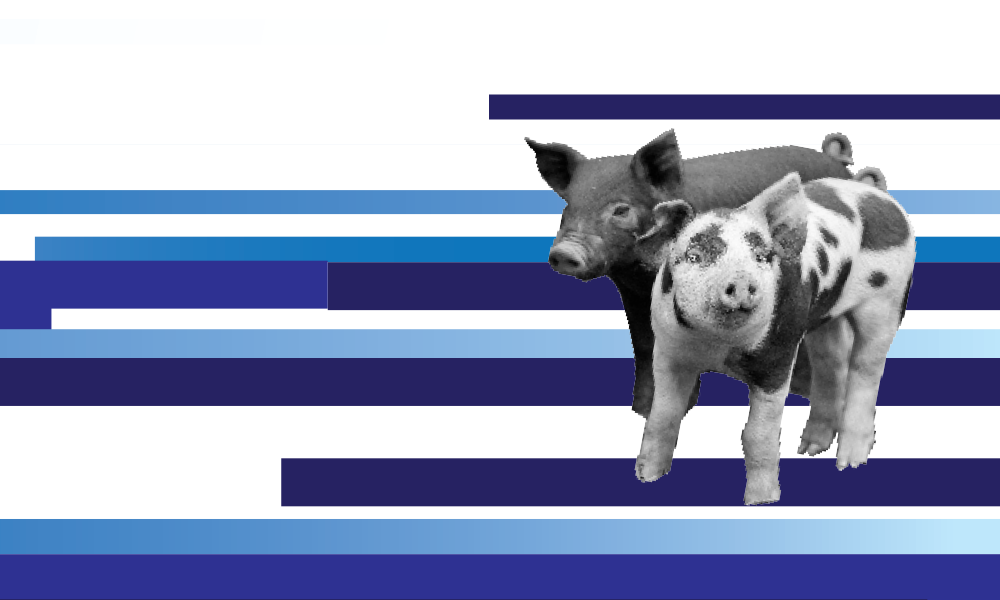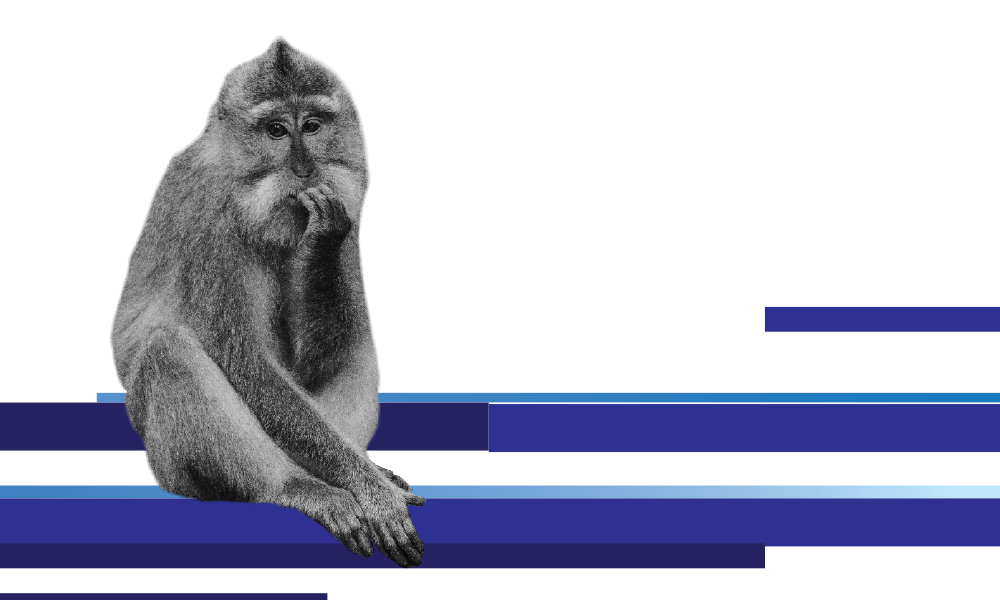By Erik Walenza, CEO of IoT ONE; edited by Noga Feige, Senior Editor of Ticker Magazine.
‘AIOT: Bringing AI to the Physical World’ was published in the spring 2021 edition of the German Chamber Ticker. Editor: Noga Feige, Senior Editor of Ticker Magazine. Visuals: Matter Design.
For the past several decades, the term AI has evoked a sense of technological utopianism clouded with a shadow of disillusion. Conjuring the vision of machine-based intelligence is easy. A child watching The Jetson’s in 1962 could imagine “Rosey the Robot” cleaning his home. Building AI is another challenge entirely.
Now, 70 years after the first successful AI program was written in 1951 by Christopher Strachey of Oxford University, development has finally begun to catch up with our collective imagination. It is a narrower version of AI than Hollywood promised, and many of the most compelling use cases remain years or decades away. Yet in other ways, innovators are finding tremendous value in industrial use cases that are far too practical to make good television.
What is AIoT?
One cluster of these use cases can be categorized as AIoT, meaning that they integrate Artificial Intelligence (AI) and Internet of Things (IoT) technologies to create solutions that are both smart and connected. Let’s define these two acronyms.
AI refers to machine-based intelligence. Traditional automation is rules-based – if this, then that. These systems work well for stable processes that can be coded manually. AI systems use machine learning algorithms to generate intelligent responses to dynamic situations with complex data inputs. A stable process flow can be defined by hard-coded rules, but optimizing the performance of a specific machine in that process requires AI.
A high-impact AIoT use case that Hollywood missed is machine recognition for pigs. […] These systems diagnose illness, predict fertility, and alert staff when new mothers are at risk of accidentally smothering their babies. With more than 400 million pigs in China, pig health and procreation is big business.
Modern AI solutions use a range of approaches for different problems. Supervised learning requires tagged data, such as images of faults in machined components. It is used for image classification, fraud detection, machine diagnostics, weather forecasting, and other situations where an event can be labeled. Unsupervised learning is used when data is sufficiently messy that it cannot be tagged or easily categorized. It can be used to discover the structure of a complex system or to build recommendation engines. Lastly, reinforcement learning is effective for guiding continuous action in an environment, such as autonomous driving or robot navigation.
IoT refers to the integration of sensors, transceivers, processors, and software into physical devices so data can be collected, transported, and acted on. Connected devices feed AI algorithms with real-time data and enable action to be taken in the real world. Edge computing further enables algorithms to run near where data is produced, rather than in the cloud.
Who Builds AIoT Systems?
AIoT systems combine the data collection and processing capabilities of IoT devices with the analytical capabilities of AI algorithms. An illustrative and high-impact AIoT use case that Hollywood missed is machine recognition for pigs. Pigs look the same to us, as we must to them. But to an AI algorithm, every pig is unique. Systems developed by Alibaba, Huawei and a slew of startups use audio, infrared, and video cameras to create a health profile of each individual pig. These systems diagnose illness, predict fertility, and alert staff when new mothers are at risk of accidentally smothering their babies. With more than 400 million pigs in China, pig health and procreation is big business.
The AIoT User Group defines three types of AIoT companies: digital OEMs, digital equipment operators, and hybrid companies.
• Digital OEMs have their core business model rooted in a physical product. They enhance this product with intelligence and connectivity to add new functionality and data-enabled services. Examples include usage-based car insurance, drone infrastructure inspection, and prescriptive maintenance for equipment.
• Digital equipment operators manage physical assets, ranging from a contractor who owns one truck to a corporation managing dozens of factories. They deploy AIoT on their own asset base to improve operational metrics such as energy efficiency, production quality, safety, or asset utilization.
• Hybrid OEM-operator models are increasingly common since both OEMs and operators seek growth opportunities by extending their business. For example, EV manufacturers like Tesla are building networks of fast-charging stations to extend their business into energy infrastructure management.
Today, many AIoT use cases are already widely adopted. Machine vision alone is used in dozens of situations, from drone-base façade inspection to user authentication to package inspection. Let’s take a closer look at one example.

Where is AIoT in Use Today?
Drone-base façade inspection can both increase efficiency and reduce safety risks. First, a supervised learning algorithm is fed thousands of tagged images of faults, such as concrete cracks, spalling, or corrosion. The algorithm is typically developed in the cloud, where there is cheap access to data storage and processing power. After the algorithm reaches a sufficient accuracy rate, let’s say 90 percent, it will be deployed. The accuracy will continue to improve over time as more data is uploaded to the system during operations.
Meanwhile, reinforcement learning is used to develop an autonomous drone flight system that can navigate complex environments using path-planning for inspection and obstacle avoidance. The navigation system is deployed directly on drone hardware due to the safety risk of a flight failure if connection to the cloud is disrupted.
The first Neuralink applications will help people with paralysis to regain independence through the control of computers and robots. Future applications that the team is exploring include telepathy (speech is quite inefficient at transmitting our thoughts) and visual prosthesis to cure blindness.
The fault detection algorithm can be deployed directly on the drone or a nearby computer. Edge deployment makes sense if real-time feedback is required and the internet connection is unstable, or if transferring high-resolution image files to the cloud is unacceptably expensive. Alternatively, the data could be transferred to the cloud, where storage and computing power are cheaper. This approach is preferred if there is a stable and affordable internet connection.
The AIoT race has just left the starting line. Today’s systems are improved approaches to manual processes or rules-based algorithms that have been used for decades. They are typically narrowly defined to solve one problem and remain quite brittle. But Moore’s Law and a flood of venture capital and corporate research financing are rapidly driving AIoT forward.
How Will AIoT Transform Tomorrow?
As is often the case, a recent glimpse of the future came from a company backed by Elon Musk. On 8 April, Neuralink posted a video on Youtube of a monkey playing the video game Pong on a computer using only its brain – and the monkey showed talent! Neuralink works by inserting micron-scale threads into areas of the brain that control movement. Each thread connects electrodes to an implant. The implanted device then processes, stimulates, and transmits neural signals. It is charged wirelessly using an inductive charger. Deep learning algorithms decode signals from the brain and convert them into code.
The first Neuralink applications will help people with paralysis to regain independence through the control of computers and robots. Future applications that the team is exploring include telepathy (speech is quite inefficient at transmitting our thoughts) and visual prosthesis to cure blindness. Clinical trials on humans are planned to begin later this year.
Brain surgery is sensitive work. Fortunately, companies are building “robot-assisted surgery” solutions that enable surgeons to work from a “surgeon console” using finger controls to manipulate robotic arms. Wrist, hand, and finger movements are translated into fine movements at the tips of the instruments, which are much smaller than the surgeon’s hands and can work in confined spaces. As early as 2016, the Smart Tissue Autonomous Robot (STAR) could stitch a pig’s small intestines using its own vision, tools, and intelligence better than the average human surgeon. In the future, surgeons themselves may face obsolescence.
Another less sexy – but equally impactful future lies in the development of a ‘system of systems.’ Today, there really is no ‘Internet of Things.’ Rather, there are many narrow applications with access to data from specific sources. Companies such as Terbine are making progress in solving the technical and business challenges of sharing IoT data between companies. Other organizations like the OPC Foundation are standardizing communication protocols. The common goal is to create a true Internet of Things that approaches the deep connectivity that we value in the Internet of People.
AIoT will be critical for generating value out of the data integrated into a system of systems, as well as for governing how data can be shared and monetized. Companies do not need to become AIoT experts to leverage this powerful set of technologies, but they must establish effective organizations and partnerships.

Practical Steps to Building AIoT Solutions
Since smart, connected products integrate AI, traditional software, and hardware technologies, a key task for the product or project manager is to build a multi-disciplinary team with competence across five viewpoints:
The AIoT Business Viewpoint defines the business model and how the solution integrates with existing products and services.
The AIoT Usage Viewpoint identifies how people, assets, and other system elements will use the solution.
The AIoT Functional Viewpoint maps the data inputs, dataflows, and functional components of the solution.
The AIoT Implementation Viewpoint involves AI training and hardware and software deployment.
The AIoT Product Viewpoint applies an agile product development perspective to guide ongoing system improvement.
Most organizations have expertise in some but not all of these competencies. For example, an OEM with a clear understanding of its customers’ unmet needs may lack an understanding of how to architect data or which challenges to expect during AI training. Collaboration between companies that build or operate physical assets and digital-native companies is often necessary to assemble a holistic team.
The future of AIoT is arriving quickly, and few companies are prepared. Yet lack of readiness does not justify lack of action. Starting small but fast is a proven approach to building competence, testing concepts, and establishing a culture that views innovation as an opportunity rather than a threat. ■
Erik Walenza is the CEO of IoT ONE and the Co-chair of the American Chamber of Commerce Technology and Innovation Committee. As CEO of IoT ONE, Erik researches the impact of digitalization on his client’s businesses and supports them to realize growth opportunities and manage threats related to the changing technological landscape.

